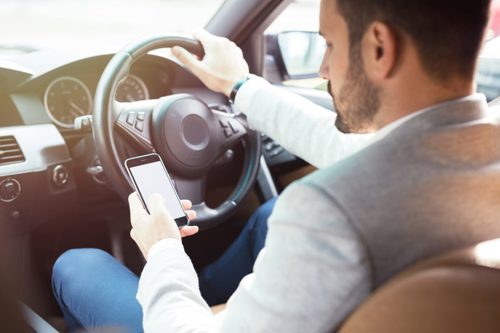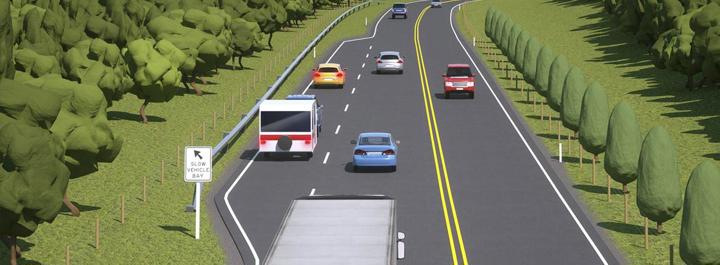The results are in, from our inaugural DRIVEN Great Kiwi Driver Survey for 2024. We now know what you think are NZ drivers’ best and worst habits.
Last month we put these questions out to the public, via the NZ Herald, to garner input and responses on what people think are the best and worst habits that we, as Kiwis, are famous for.
With school holidays starting this weekend, it’s a sobering reminder to realise that in 2023 there were 340 deaths on our roads, which was 34 down on 2022.

With 180 deaths to September 2024, while the NZTA’s Road to Zero aspirations maybe fanciful, there is plenty of scope to dramatically reduce not just deaths, but crashes.
We’ve put together this survey to help highlight and focus on our driving behaviour, and to try and make driving on our roads a little better, with respect and reference to both NZ Police and the Land Transport (Road User) Rule 2004 (61001) road regulations.
We’ve also added comments, using both our input and experience along with a number of professional driver trainers, who teach and observe both local driving and drivers, and travel the world for direct driver comparisons.
Question 1: How would you rate the general driving standard in NZ?

More than 94% of Kiwis think our driving is between very poor to average! Half of NZ rates itself as okay/average as drivers, which is fair, as no one wants to be too hard on themselves; but 44% also think we are poor or very poor drivers.
Our pro driving instructors — who regularly travel the world and compare us to the likes of Australia, UK, Germany, America and Japan — confirm and reinforce that NZ has a very poor driving standard based on general skills, discipline, courtesy and following road rules, combined with roads rules that sometimes defy common sense and logic. Interestingly, just two respondents ranked it as excellent.
Question 2: When driving at the speed limit in traffic, rank the following from what you are most likely to least likely to do if a car is tailgating you.
Rule 5.9(3) Drive too close to vehicle in front comes with a $150 fine. With tailgating being a major
problem in NZ, the most popular way to respond was to simply ignore them! Which is concerning but very much describes the Kiwi way of driving while-ignorant, rather than letting faster traffic past.
The second most popular was to move over and let them pass: the smartest and safest move. With
so many variables (speed, traffic density, driver behaviour) it’s impossible to blanket label causes,
but not keeping left unless passing is a major cause and trigger to tailgating, combined with the lack of policing of the keep-left road rule.

An overwhelming commentary response was that ute drivers are the most common/stereotypical tailgater, which is unsurprising given the number on our roads.
Pro tip: always leave a 2-second gap (4 seconds in the wet), regardless of speed, to the car in front —yes, cars will merge in front in traffic, but use the gap to manage your own safety.
Canada suggests a 3-second gap, but the principles are the same.
Question 3: When two lanes are merging into one, one lane has a line of traffic, but the second lane is free, which of the following actions are you most likely to take?

Clearly the most-misunderstood question, and a prominent driving issue as some commented it depended upon which lane they were driving, highlighting one problem. The most common answer was the most logical, to merge in a suitable gap, but—typically going into a construction zone—studies have shown the most efficient way for traffic flow is to create two even lines of traffic and zipper merge at the merge point.
However, this triggers bad drivers (32% in fact!) into merging too early, creating one long line, while some even attempt to police the free lane and literally block traffic flow. One driver trainer told of a driver intentionally crawling/blocking the free lane for 2km leading up to a merge point, but by the time they’d eventually reached the construction zone, it had been removed—so this driver was solely responsible for worsening the jam. Merge like a zip at the merge point, or close to it; it is not queue jumping, it is the most efficient way.
Zipper merging explained.
Question 4: When driving in the fast lane on a motorway, rank the following in terms of what you are most likely to least likely to do.

Quite a confusing result, given it contradicts the hundreds of comments. Also, in contrast to the tailgating question,we can only hope it was our DRIVEN readership being better drivers than most, with almost three-quarters following the keep-left rule—but not keeping left is arguably NZ’s biggest driving problem.
The lack of “Keep Left” advisory/ reminder signs on our roads is just the start, and our pro drivers have witnessed many public, ambulances, government vehicles, buses, trucks and even marked police cars all sitting in the overtaking lane at or under the speed limit, either not passing, or being overtaken.

Worryingly, around a quarter of respondents contribute to our country’s poor driving standards by not following the elementary road rule.
The modest fines are hardly a deterrent: just $150 and zero demerit points, but even the NZ Transport rules are ill-defined: 2.1(1) Fail to drive as near as practicable to the left of the roadway or 2.2 (2), Fail to allow impeded traffic to pass.
Keep left unless passing, it’s as simple as that, and disciplined countries like the UK and most of Europe are perfect examples of how well it works.
Question 5: At a two-lane roundabout, when going straight ahead, which of the following actions do you usually take?

Admittedly a tough question to ask without detailing a page of specifics, but also one of the most misunderstood and misused road rules in NZ: correctly indicating at roundabouts.
It’s baffling and incorrect to see that one-third of Kiwis incorrectly indicate upon entry, and also that just 60% indicate on exit only, which in pragmatic, practical terms leans more towards courtesy than safety. Indicating incorrectly when entering is a bigger issue with ramifications for collisions, but the biggest problem our pro drivers observe is when driving straight ahead at a two-lane roundabout, many cars will signal right upon entry (from either lane), which is confusing and dangerous—or turn and not signal at all.

The majority of NZers seem to understand the signal-to-exit part, but when it comes to signalling versus actual direction, it seems about one-third of drivers do it wrong—and tragically this includes witnessed professional drivers who should be setting a better example, such as police, ambulances, and truck drivers.
How to indicate at roundabouts: from NSW, but same rules in NZ.
Question 6: When driving through construction zones, what do you typically find yourself doing regarding the posted speed limit?

Commonsense rules here and thankfully over 90%largely respect and consider the safety of workers. Sadly, this problem has been caused by (broadly) the NZTA. The overuse of construction zones that go for kilometres with either no construction, no workers or even forgotten construction signs have created frustration and contempt, let alone construction zones that create a huge disparity to the normal speed limit for an inordinately short time, say 60km/h on a 100km/h motorway for just 50 metres.

The key point is to look after our road workers and drive safe around them, who are doing their job and deserve to be safe.
Question 7: Do you use your phone when driving in any of the below situations?

A multiple answer question that offers a broader cross-section of answers, but while phone use is illegal, except for use through modern cars’ phone projection, around40%of us admit to using our phones illegally, particularly in heavy traffic/when stopped.

The fine for illegally using a phone while driving (and there are some legal uses) is $150 and 20 demerit points.
Question 8: When should a driver be tested in NZ?

Interesting here, with multiples answers offered, as the NZTA only stipulates a retest at age 75, and45%of Kiwis think they should only need to sit for their licence once—which is a remarkable number, given the amount of road rule changes and updates over years, such as the major Give-Way rule change of 2012.
Offsetting that is38%thinking it should be every 20 years, but61%thinking it should be mandatory after a licence loss. Many comments included the desire for retesting every 10 years, and also testing when emigrating to New Zealand.
Question 9: What do you think of elective, advanced/defensive driver courses?

A very convincing result here and proof that the driving standard clearly needs to improve. Some countries offer cheaper car insurance, and as our pro drivers attest, defensive driver training courses teach everything from crash avoidance by using the car’s technology or driving skills, ways to minimise driver fatigue and improve awareness and even life skills that are carried beyond the car.

This is where a road to zero fatalities starts. Which is equally disturbing to see that 2%of respondents don’t see value in them.
A common comment was that those who have done a defensive/ advanced driver training course could not speak highly enough of it and its need to be mandatory.
Question 10: What is New Zealand's Worst driving habit?

And the winner is . . . a slight upset! Distracted driving is a broad term, but it’s clear that we just don’t like drivers who display poor or ignorant driving, largely while using their phone. This leads to special awareness and general selfish driving behaviours, and dangerous and potentially deadly outcomes.
Favourite going into the survey, not keeping left is the second biggest bugbear on NZ roads, and annoyingly, such a relatively simple one to educate and police: we’re talking to you, NZTA. Signs, campaigns, and policing could all help improve this endemic issue.

Running red lights is another potential killer, while NZ road rage ranks 4th as our worst habit—partly due to the generally average/poor state of driving triggering it. Speeding, interestingly, ranks just 5th on the table, proving there are other more important factors to consider making our roads better and safer than the default go-to safety message and revenue-raiser.
Other comments from respondents, and there were hundreds of them, included a focus on driver skills, not speeding, having pro drivers teach driving skills, not parents. One stated: “NZ is home to the worst drivers in the world. Their situational awareness, ability and control of vehicles is appalling. This is due to lack of any consequences, poor training and almost zero enforcement.”
Another common complaint was about cars driving slowly, then speeding up in passing lanes. There’s an overwhelming sense in the anonymous comments that the general driving standard is appalling, one of the worst in the world, and worse than the survey results suggest.

Driving skills and standards won’t improve by themselves, and clearly, we have a poor driving standard problem in New Zealand that’s endemic and not improving anytime soon. The NZTA needs to start looking at the real cause of our biggest problems, and from this survey, it appears to be driver training, education and addressing the issue of lane discipline simply by pushing the keeping left unless passing message.
Thank you to all who contributed answers and comments, this was an initiative to improve awareness of our driving, and do our part in improving our driving for road safety and the simple pleasure and privilege of driving.
Another Canadian/AMA video, with relevant messaging about distracted driving.
A reminder if a car is driving dangerously or erratically, call the non-emergency police line on 555 to file a report. Drive safe and defensive, not just through these school holidays, but always. Be mindful of distracted driving, and always keep left unless passing.













